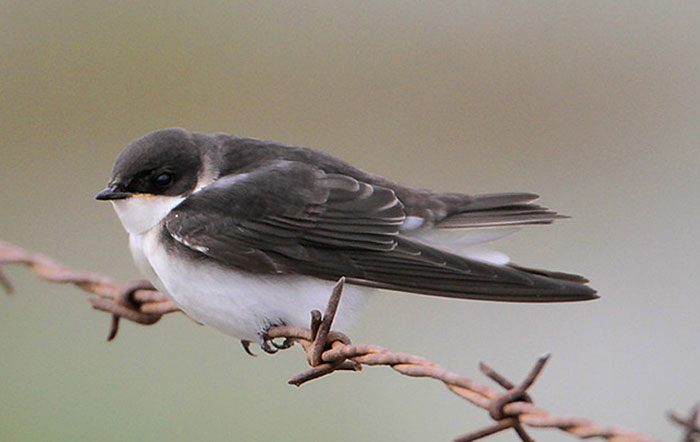The Tree Swallow is one of the most commonly seen swallow species in North America. The beautiful iridescent blue upperparts and snow-white underparts of this pretty little bird are enjoyed by birders from Alaska all the way south to Florida and Mexico.
Tree Swallows can be seen in many situations but this swallow species prefers marshes, rivers, and other wetlands that provide large numbers of the small insects they feed on.
On this page
Identification
The Tree Swallow is a small to medium-sized swallow that has shining blue upperparts, and bright white underparts. It has black from the eye to the short bill, long, dark gray or blackish wings, and a dark gray or blackish, forked tail.
Both sexes look very similar, but male Tree Swallows tend to be brighter blue and may weigh slightly more than the females. Female Tree Swallows can look just like males or they can have a greenish cast on the blue upperparts.
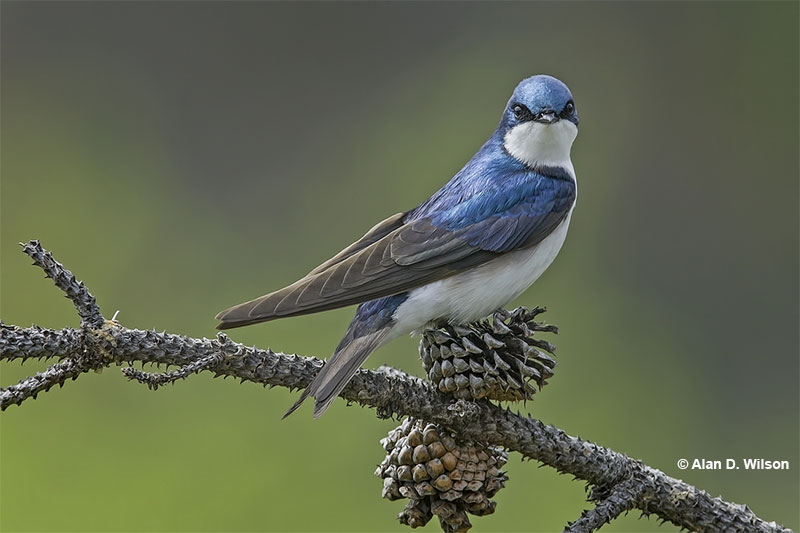
© Alan D. Wilson
Young, two-year old females can also have grayish-brown upperparts with a hint of blue or green. First-year birds of both sexes are grayish-brown above and white below with a dusky wash across the breast.
In flight, young and adult birds show a dark, slightly forked tail, dusky wings, and a tiny bit of white.
The Tree Swallow often gives scratchy, warbling calls both during flight and while perched.
Food
The Tree Swallow feeds on a variety of small flying insects that breed and live in wetlands. These prey items include various small fly species, damselflies, caddisflies, mayflies, and other small bugs.
During migration and winter, they also feed on Myrtle or “bayberries” and are one of the few bird species (along with the Yellow-rumped Warbler), that can digest these waxy fruits. When insect food is scarce, Tree Swallows wintering in regions with cool climates can also eat seeds, sedges, and other vegetable matter.
Before breeding, as is common with many other bird species, the female Tree Swallow eats bits of clam shells, exoskeletons of crayfish, bits of fish skeletons, and eggshells of other bird species.
They do this to obtain the calcium needed to make their own eggs. Although it takes these calcium-rich food items while briefly perched on the ground, most of this bird’s foraging takes place during flight.
The Tree Swallow catches insects throughout the day by flying back and forth, and over and above water and wet fields. When it sees small flying insects, this bird species snatches them with its short beak, and can also fly with its mouth open to swallow insects whole.
This swallow species is also very social and often forms flocks that forage together on swarms of small flying insects. Flocks of Tree Swallows also feed together on bayberries, picking them from vegetation while briefly perched or in hovering flight.
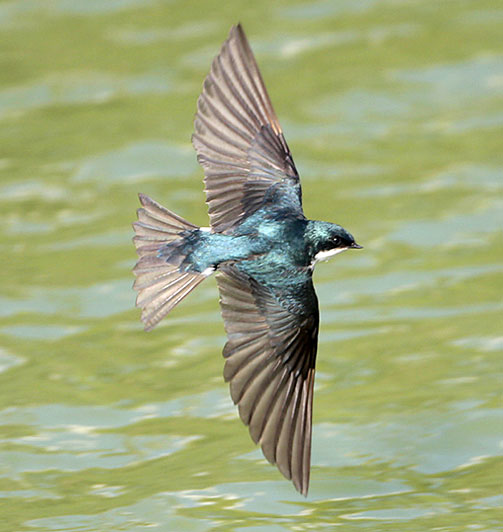
Nesting and Eggs
Depending on how far north a Tree Swallow lives, males arrive to establish territories from March to May, and either males or females choose a nest box or tree cavity to build the nest. Some weeks before the nest is built, Tree Swallow pairs leave feathers and other bits of nesting material in the chosen nest site.
Preferred sites for nesting are nest boxes, old woodpecker holes, hollow tree trunks, or other cavities in any number of open areas, often with tall grass, that are in or fairly close to wetland habitats like ponds, rivers, marshes, and sewage treatment plants.
The small cup nest is 1.9 inches in diameter, 1.18 inches deep, and is built by the female.
She can also use rootlets, aquatic vegetation, pine needles, or other bits of vegetation. Nest building takes anywhere from a few days to more than a week. Once the cup is constructed and eggs are laid, she lines it with soft feathers.
Five pale pink to white eggs are laid at dawn, one per day. They weigh 1.2 to 2.6 grams and the female incubates them anywhere from 11 to 20 days (they usually hatch after two weeks).
The young are fed an abundance of insects by both parents and fledge after 18 to 25 days. They continue to be fed for at least a few or more days until they take flight and begin to successfully forage on their own.
Current Situation
The Tree Swallow breeds in meadows, fields, bogs, and other open areas near rivers, ponds, lakes, marshes, and other wetlands. Occasionally, birds can also breed on moving ferries and other structures in or next to water.
As long as there are appropriate nesting cavities in open areas near a wetland, this species can around bodies of water situated in habitats as varied as prairies, montane forest, boreal forests, deciduous woodlands, parks, golf courses, and other places.
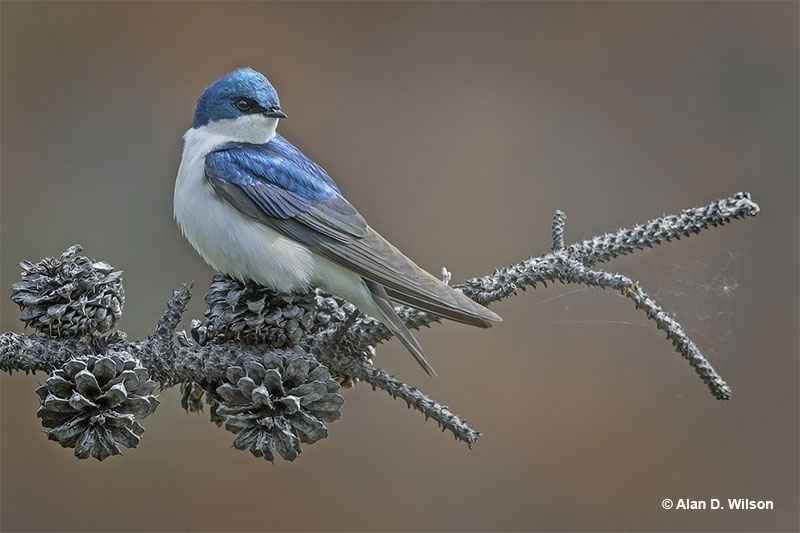
© Alan D. Wilson
With such a flexible choice of habitat, it’s no wonder that the Tree Swallow breeds in much of Alaska, a large part of Canada, and in the northern USA south to much of California, parts of New Mexico, and northern Georgia.
They winter in open habitats, often near water, in southern California, southern Arizona, and the Gulf Coast and Florida north to South Carolina. This species also migrates to Mexico, the Caribbean, and Central America.
The Tree Swallow is a common species and is not considered to be endangered. Tree Swallows have an estimated population of 20 million. Although some declines have been recently noted for this species, nest boxes have helped it increase in many areas.
Facts
- The Tree Swallow usually uses feathers in its nest but other materials have also been found including animal hair, bits of clear plastic, and even cigarette filters.
- During migration and winter, the Tree Swallow can form huge flocks that number in the thousands. Such flocks usually roost together in marshes or groves of trees.
- Although Tree Swallows don’t actually live in forests, they get their name from nesting in tree cavities.
- Tree Swallows bathe and drink water in flight. They do this by skimming low over the surface and then briefly dipping their body and bill into the water. They dry off by quickly shaking themselves in flight.
- On account of their abundance and accessible nest sites (often in nest boxes), the Tree Swallow is one of the most scientifically studied bird species.
Similar Species
The Tree Swallow is a common and easy bird to watch but it can be confused with a few other swallow species. In quick flight, it can also be tough to get a good look at this and other swallows, and young female and juvenile birds can be tricky to identify.
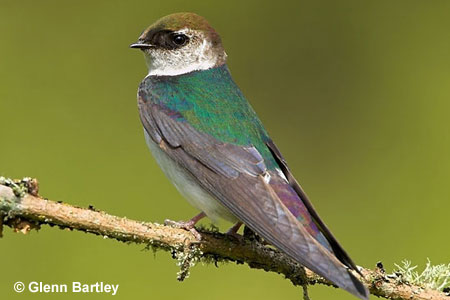
violet-green swallow
In flight, the Violet-Green Swallow can look surprisingly similar to the Tree Swallow. Violet-green Swallows have but it has a whiter or duskier face, and much more white on the sides of the rump.
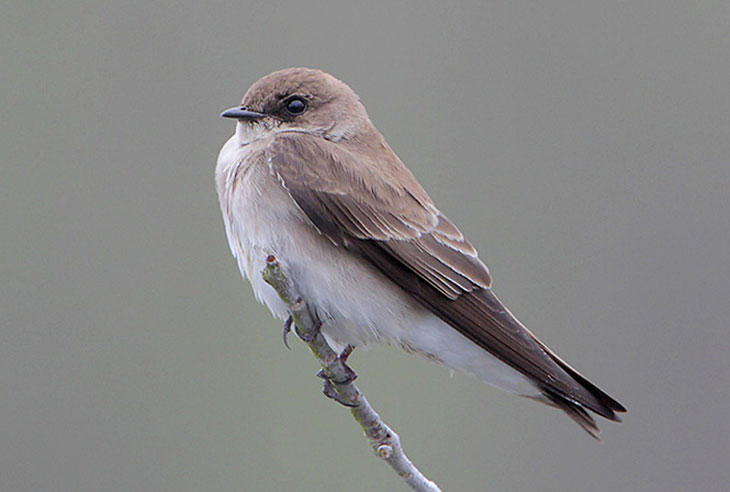
Northern Rough-winged Swallow
The Northern Rough-winged Swallow is also similar but is always brown above and has a bit of brown on the breast.
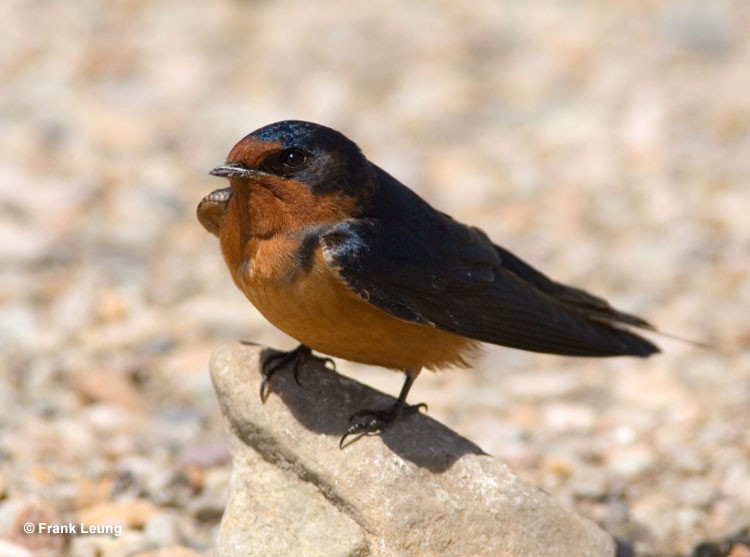
Barn Swallow
In flight, the Barn Swallow can look similar but has a bit of white in a much longer, forked tail, and an orange throat.
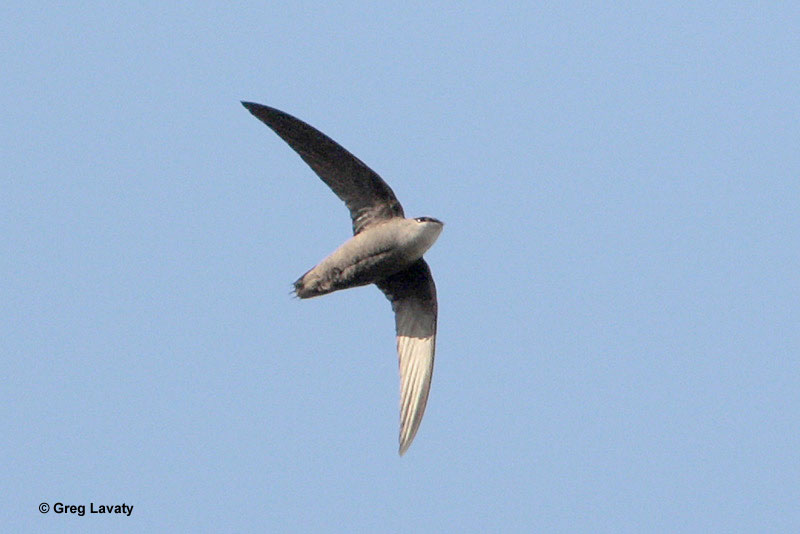
Chimney Swift
In flight, Chimney Swifts can seem similar to Tree Swallows.
They are entirely dark brown, have more “twittering,” rapid wing beats, and less swooping flight.
Frequently Asked Questions
What is the difference between a Barn Swallow and a Tree Swallow?
The Barn Swallow has a longer, more forked tail, an orange throat, buff underparts, and often nests in barns and other structures.
Where are Tree Swallows most common?
Tree Swallows are most common in and near rivers, lakes, and other wetlands, especially in Canada and the northern USA.
How many bugs do Tree Swallows eat?
Each adult Tree Swallow can eat 2,000 insects per day, and nestling Tree Swallows can eat 6,000 insects per day.
Where do Tree Swallows go for the winter?
Tree Swallows winter in southern California, coastal areas of the southern USA, Florida, the Caribbean, Mexico, and in Central America.
Are Tree Swallows beneficial?
Tree Swallows are very beneficial birds that eat large numbers of mosquitoes and other flying insects.

